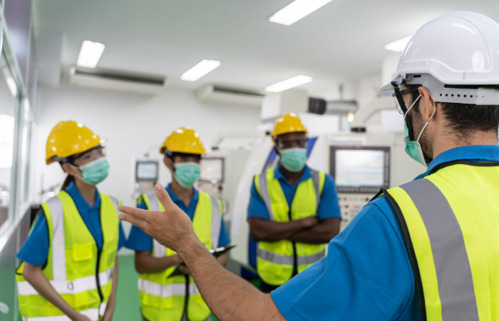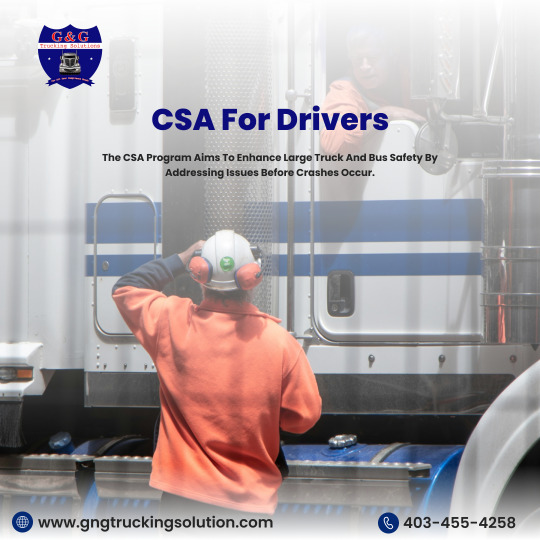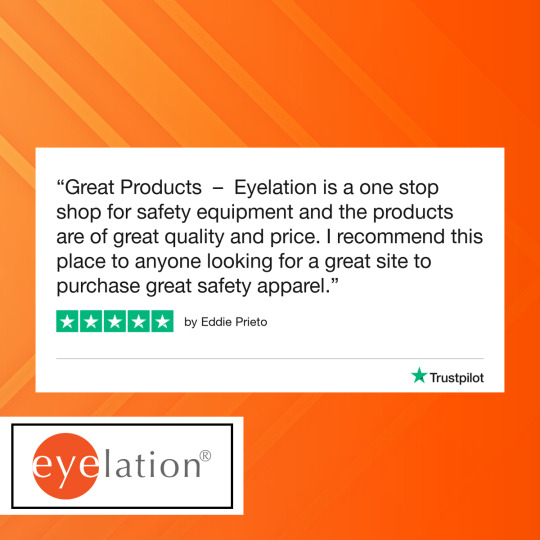#SafetyProgram
Explore tagged Tumblr posts
Text
How to Develop an Effective Health and Safety Training Program for Your Team
Creating a robust health and safety training program is not just a legal requirement—it’s an investment in your team’s wellbeing, productivity, and morale. Whether you're running a construction site, an office, or a warehouse, the principles of good health and safety practices are universal. Here’s a step-by-step guide to developing an effective training program tailored to your team’s specific needs.

1. Assess the Risks and Needs of Your Workplace
Before developing any training materials, start by conducting a thorough risk assessment of your workplace. Identify potential hazards and the likelihood of incidents. Consult staff members at all levels to understand their concerns and observe how daily operations unfold. A clear picture of the risks will inform the training content and highlight areas that need the most attention.
2. Set Clear Objectives for the Training Program
Once you have identified your workplace’s specific health and safety concerns, outline the goals of your training. Objectives might include:
Educating staff about safe practices
Ensuring compliance with health and safety legislation
Reducing the number of workplace accidents
Promoting a culture of safety and accountability
Clear objectives provide direction for the program and offer metrics for evaluating its success.
3. Tailor Content to Your Industry and Team Roles
Different roles come with different risks. For instance, warehouse operatives need training on manual handling and machinery safety, while office workers benefit from sessions on ergonomics and mental health. Customize training modules based on department, job function, and exposure to specific hazards. This makes the content more relevant and engaging for employees.
4. Use a Mix of Training Methods
People learn in different ways, so diversify your training delivery methods. Options include:
In-person workshops and demonstrations: Great for hands-on practices like using fire extinguishers or wearing PPE properly.
Online training modules: Convenient for knowledge-based content such as company safety policies.
Simulated emergency drills: Useful for preparing staff to respond effectively in high-stress situations.
Toolbox talks: Short, regular sessions that reinforce specific safety topics.
Blending multiple formats helps reinforce learning and keeps engagement high.
5. Ensure Legal Compliance
Every workplace must comply with local and national health and safety regulations. In the UK, the Health and Safety at Work etc. Act 1974 outlines general duties employers have toward employees and the public. You may also need to consider regulations specific to your industry or region. For instance, companies in Health and Safety in Berkshire or Health and Safety in Hertfordshire must ensure they align with county council guidelines and enforcement bodies.
Consult with certified health and safety professionals or legal advisors to ensure your training meets all relevant legislation and industry standards.
6. Train Your Trainers
Who delivers your training matters just as much as the content itself. Instructors should be knowledgeable, experienced, and capable of engaging an audience. Depending on your budget and in-house expertise, you may choose to:
Hire external health and safety consultants
Certify internal team leaders through official courses
Use hybrid methods, combining online materials with hands-on instruction
Investing in skilled trainers helps ensure consistency and quality across all training sessions.
7. Schedule Regular Refresher Courses
Health and safety is not a one-and-done effort. Regular refresher courses ensure that staff remember key concepts and stay up to date with evolving regulations. Frequency depends on the risk level of your environment, but annual reviews are generally recommended. Additionally, refresher training should be scheduled after any significant incidents or process changes.
8. Create a Culture of Safety
An effective training program is more than a checklist; it’s the foundation for a safety-first workplace culture. Encourage open communication where employees feel comfortable reporting hazards or suggesting improvements. Recognize safe behaviors and involve employees in risk assessments. When safety becomes part of daily routines and decision-making, training becomes more impactful.
9. Document Everything
Keep detailed records of all training activities, including attendance, materials used, dates, and outcomes. This not only helps track compliance but also allows for evaluation and improvement of your training program over time. Good documentation is also essential in the event of an audit or legal investigation.
10. Evaluate and Improve
Gather feedback from participants to understand what’s working and what isn’t. You can use surveys, quizzes, or informal discussions to gather insights. Use this data to adjust your program, address gaps, and refine future sessions. Continuous improvement ensures your training evolves with your business and regulatory requirements.
Conclusion
Developing an effective health and safety training program is an ongoing process that pays dividends in productivity, employee satisfaction, and legal compliance. By customizing content, using varied delivery methods, and fostering a culture of safety, you can protect your team and strengthen your business operations.
Whether you operate in Health and Safety in Berkshire or Health and Safety in Hertfordshire, taking a proactive approach to workplace safety is essential. With the right training in place, your team will be equipped not just to meet regulations—but to exceed them.
#business#health#health and safety#safety#safety training#real estate#services#construction#public health and safety#workplacesafety#EmployeeTraining#HealthAndSafetyTraining#RiskManagement#workplacewellbeing#SafetyProgram#TrainingAndDevelopment#HealthAndSafetyBerkshire#HealthAndSafetyHertfordshire#UKWorkplaceSafety#ComplianceTraining#safetyculture#occupationalhealth#BusinessSafetyStrategy
0 notes
Text
Is Your Team JHSC Trained?
Enhance workplace safety with our JHSC Training program! FAST Rescue offers Ministry of Labour-approved certification courses, including Part 1, Part 2, and Refresher options. Choose in-class or distance learning to suit your needs. Equip your Joint Health and Safety Committee with the knowledge to handle workplace hazards effectively.
Get certified with FAST Rescue today!
#JHSC#JHSCCertification#WorkplaceSafety#SafetyTraining#HealthAndSafety#WorkplaceHealth#SafetyProgram
0 notes
Text
Boost Workplace Safety with Safety Incentive Coins
Safety incentive coins are a powerful tool to encourage workplace safety and reward employees for maintaining a hazard-free environment. These coins serve as a tangible recognition of safe work practices, boosting morale and reinforcing a culture of safety. By implementing a structured safety incentive coins program, businesses can reduce workplace incidents, improve compliance, and enhance employee engagement. Safety Jackpot offers innovative solutions to help organizations motivate their workforce while prioritizing safety. Recognizing and rewarding employees effectively leads to long-term success and a safer work environment.
0 notes
Text

CSA for Drivers The CSA program aims to enhance large truck and bus safety by addressing issues before crashes occur. [email protected] ☎️ 403-455-4258
#SafetyFirst#EfficientTrucking#TruckingSolution#StatePermits#drugtestservice#maintenanceservices#SafetyPrograms#truckinglife#transportation#truckdriver#truckingindustry
0 notes
Text
Project Risk Management

Project risk management is the process of identifying, analysing and then responding to any risk that arises during the life cycle of a project to help you stay on track and achieve your goal. To know more visit us: www.kingssafety.ca
0 notes
Photo

Road Safety Initiative with TCI Safe Safar
TCI Safe Safar is a Road Safety Transport Community in India that aims to create awareness among all. Take a Road Safety Initiative with TCI Safe Safar.
#tcisafesafar#roadsafetyinitiative#healthandsafetyprogramindia#roadsafetyindia#healthandroadsafety#health&safetyprogram
0 notes
Video
Workshop General Safety Part IV [A]
0 notes
Text
Behaviour Based Safety
Build a Behavior-Based Safety Program in Simple Steps
A behavior-based safetyprogram can be the key to reducing severity and frequency of preventable workplace injuries and illnesses. Behavior-based safety (BBS) requires companies to focus on empowering workers with policies and systems to support safe behaviors, rather than dictating safe behaviors.
There are many levels of safety audits. For example, an individual team can have a behavior-based safety program, but that is not the same as a corporate-wide program. However, both must follow the same steps in order to be successful.
1. Collect and Review EHS Data
The first step in developing a behavior-based safety program is to start collecting and reviewing data. This will allow you to identify the behavioral and workplace scenarios that need attention. In addition, it is easier than you might think. All you have to do is create your program's list of hazards. Then, focus on addressing the actual or potential unsafe behavior or actions behind each hazard.
2. Create a Critical Behavior Checklist
Safety consultants can use the CBC to identify behaviors that are directly linked to excessive risk taking and injuries. The CBC can also show which behaviors do not lead to injuries, so that employees can avoid the behaviors in order to further their own health and safety.
3. Track and Measure Behavior
Employees who leave the workplace without permission are a concern to all companies, but they are especially dangerous in hazardous environments. If you own or manage a business that requires employees to work in harsh conditions, then there is a good chance that some of your workers have left their posts at some point and returned either intoxicated or injured.
The safety manager needs to consider implementing programs that will not only track if employees are leaving their stations, but also ensure that they are not present at unsafe levels when they return.
4. Give Feedback
Giving feedback is an essential part of any industry and workplace. At its root, feedback is a simple concept. It's a message delivered to an individual or group that indicates the degree in which they are reaching some desired result or outcome. The more specific the message, the more helpful it can be to the recipient.
5. Measure Success and Continuously Improve
The Behavior-Based Safety Program = Better performance + Improved safety + Increased employee engagement = Tremendous ROI. Developing a behavior-based safety program can bring tremendous benefits to your organization and its employees.
How we can help
· Online/onsite training
· Safety Audits
· BBS training and audits
+91-7665231743 [email protected] or www.thesafetymaster.com
0 notes
Photo

It's easy to manage your safety program with 24/7 access to Eyelation's admin portal. View orders and summary billing reports in real time. Learn more at https://eyelation.com ....#HSE #programmanagers #admin #adminportal #safetyprograms #programadmins #hsemanagers #prescriptionsafetyeyewear #safetyshoes #ppe #ppeprograms #safetyatwork #safety #saas #platform #eyelation
0 notes
Text
Contractors are an interesting group of employees
Safety plans keep employees safe, but they also serve toset a distinct tone of what is expected of each employee while they are workingat any particular facility. Companieshave smaller areas within themselves and each area should have their own safetyprotocol in a written program. Theseprotocols would align themselves with the larger company wide safetyprogram. The best situation is whenmanagement, from the very top down, has decided that safety is a number onepriority and they will do whatever it takes to ensure that everyone china coil safety strap followsprocedures. This type of thinking is rare. Not saying that it is rare to find a companythat wants to keep its employees safe, but more often than not most employerswould rather do the minimum required by OSHA. Upper managements level of commitment to making safety a priority intheir company is the first step to having a truly safety first thinkingenvironment.
Having a formal written safety and health policy is the first question asked when a safety firm performs an audit. While performing an audit the Certified Safety Professional (CSP) is looking to establish how well written and wellfollowed the plan is companywide. Is thecompanys safety program given the same priority as productivity andquality? When top level management is anintegral part of the culture of safety the employees will not only buy intothe culture being established, but it will also make safety a given whenworking. It is imperative that theleadership take an active role in safety at the facility by always making sureto wear the proper safety gear when walking around the plant. The program also provides a line at which everyone isheld accountable. It allows for there tobe zero room for confusion, mixed messages, or miscommunication. The program establishes that this is the lineat which everyone is to be held accountable, and everyone adheres to that line,even any contractors that are working on site.
Contractors are an interesting group of employees and while they are nottechnically under the direct control of the company where they are working, theyare still working at another job site. Because they are working at another companies plant, they are stillsubject to rules both safety and otherwise of the facility where they areworking. Just as it is imperative for all levels of leadership tobe involved in creating and keeping a culture of safety, it is just asimperative for the employees to be involved. Without the employees participating in the safety initiative there willnever be a culture of safety. Sometimesit can be difficult to get employees to buy into a safety program. While the CSP is auditing a companys policyhe can make suggestions for ways to get employees on board. If your company is struggling with your current safetyprogram, or if you would like to have a safety audit, click here to find a CSPnear you.
0 notes
Link
A significant health and safety course can be provided outside formal classroom settings contrary to what has been done in other countries. Novelle Center offers the best health and safetyprogram in Nigeria. Creative ways of training may include peer-to-peer training, on-the-job training, and worksite demonstrations proven to be more effective in transferring safety ideas, confirming comprehension of hazards and their controls.
0 notes
Text
Safety Training

To ensure safe working environment in oil and gas industry is a #safetytraining. #kingssafety uses a top-of-mind approach to keep our team focused on any critical issues.
To know more visit us: www.kingssafety.ca
0 notes
Link
TCI SAFE SAFAR is a Health & Safety Program by India’s best logistics Company Transport Corporation of India LTD. It includes us all. How can we change this picture? How can we make our roads safer? How can we save lakhs of precious lives and billions of rupees? Connect with us and take a Road Safety Initiative with us.
#health&safetyprogram#roadsafetyindia#roadsafetyinitiative#roadsafetytransportcommunity#roadsafetytransportcommunityindia#healthandroadsafety#healthandsafetyprograminindia
0 notes
Photo

Happy Monday! Starting the week off with this fantastic review from Eddie Prieto about Eyelation's one stop shop for safety equipment! Our motto is safety from simplicity®, and are so proud to be able to provide employees with more than just safety glasses on one platform! ....#safety #safetyproducts #onestopshop #saas #platform #safetyglasses #safetyshoes #safetyprograms #safetyatwork #orderonline #customers #thankyou #customerappreciation #trustpilot #5stars #customerreviews #eyelation
0 notes
Photo

The Bay Area has almost as many refineries as it does bridges. Chevron, Shell, Valero and more all create jobs for bay residents, but they also create a ton of safety hazards. When it comes to safety at the refinery, a good line of defense is to have a PPE program. Check out this article on how to design one from the ground up!
Refinery Article
0 notes